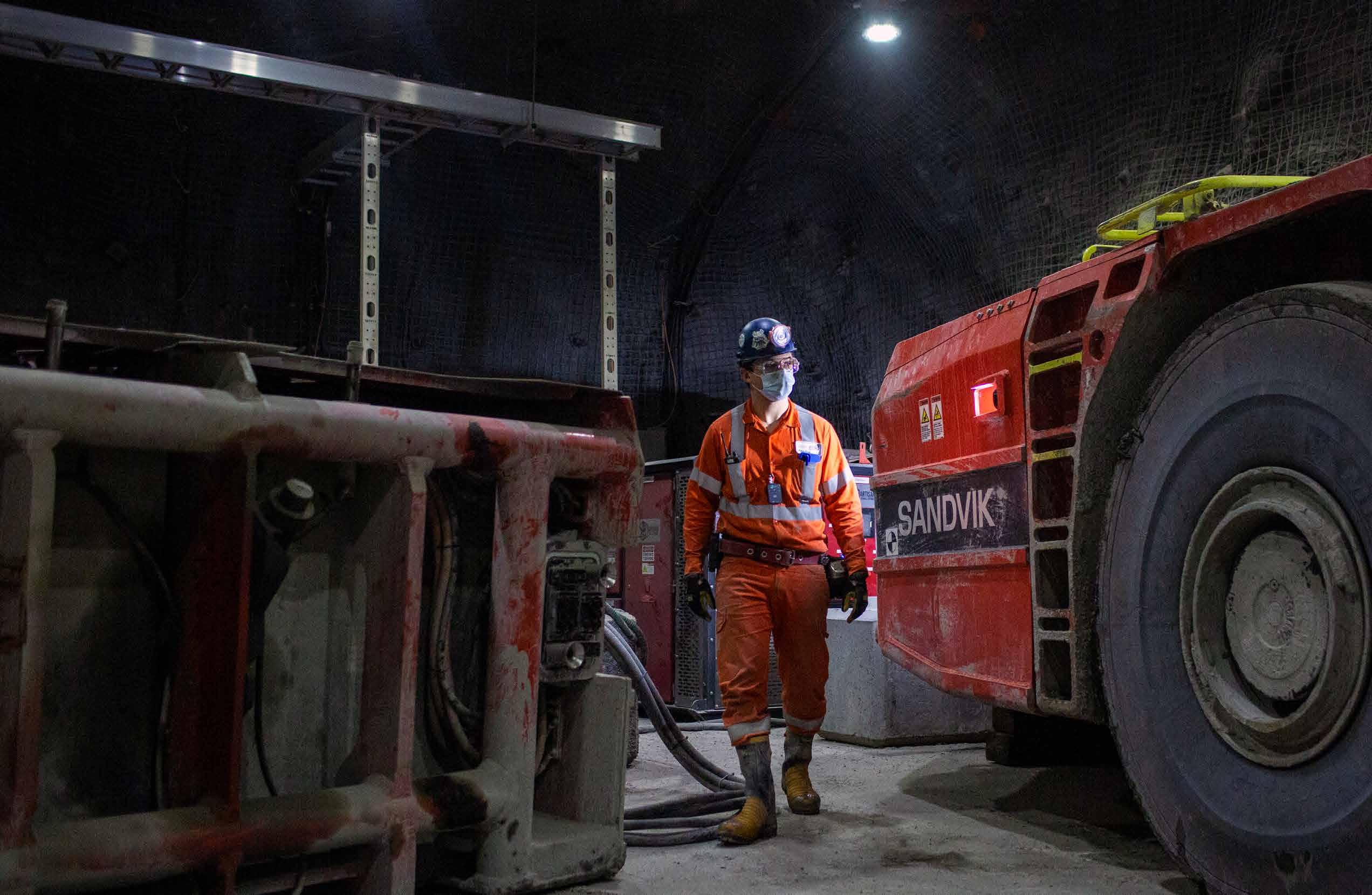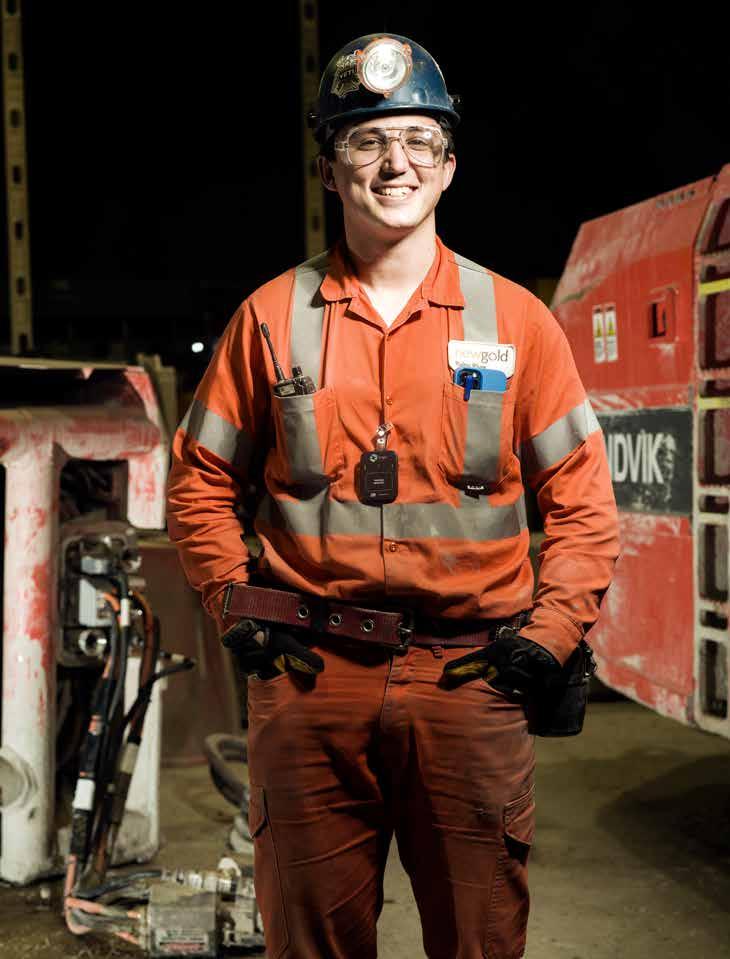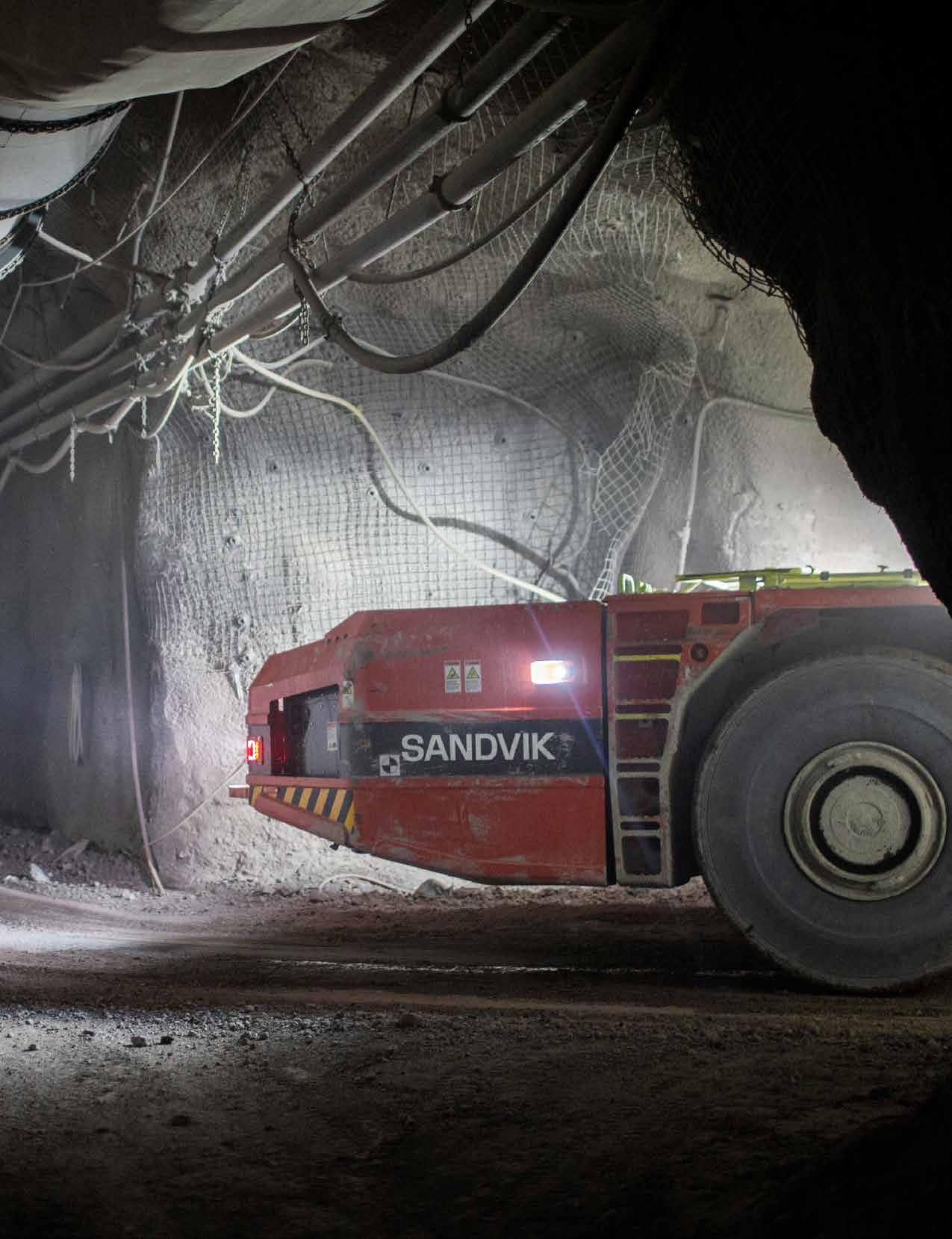
2 minute read
FIRST OUT OF THE BOX
KAMLOOPS, BRITISH COLUMBIA. The industry’s first 18-tonne battery-electric loader is helping New Gold’s New Afton operation improve cycle times while reducing heat, noise and greenhouse gas emissions in Canada’s largest underground mine.
OPERATOR DAYTON GRAY trams mining’s largest battery-electric loader into a charge bay in the Lift 1 haulage loop at New Gold’s New Afton block cave. There are no overhead cranes or forklifts in the converted re-muck, where the loader’s self-swapping system disconnects and lowers a depleted battery, trams to pick up a fully charged battery and automatically connects it. Gray doesn’t leave the cabin throughout the process, controlling the swap by following prompts on a touchscreen. Less than six minutes later he trams out of the charge bay and speeds up an incline.
New Afton mine manager Peter Prochotsky sees this process as the potential future of “refueling” for underground mobile equipment.

New Afton mine super-intendent Jeff LaMarsh wants to embrace electrification as part of the future of the mine.
“It’s a huge step change for our industry to move from diesel to electric, and I’m happy to take part in it,” he says.
The loader, the first Sandvik LH518B 18-tonne battery-electric vehicle (BEV), is the first major piece of BEV infrastructure at New Afton. The gold mine, which blasted its first drawbell in 2011 and entered production in 2012, has a history of pioneering innovative new technologies that help ensure the safety and health of its employees while also improving productivity. New Afton was an early adopter of automation and is proud to be a first-mover in battery-electric mining.
In 2016, New Afton completed a feasibility study to determine the viability of its C-Zone ore body. The C-Zone, which contains approximately 29 million tonnes, is expected to begin production in the second half of 2023 and extend New Afton’s mine life to 2030. New Afton considered electrification from the beginning due to the new ore body’s depth 1,150 metres below surface, and mine superintendent Jeff LaMarsh said New Afton recognized a number of potential benefits of battery-electrification during the study.
“We want to embrace electrification as part of the future for our mine and potentially the future for the industry,” says LaMarsh.
The C-Zone project was approved in 2019 and New Afton teamed up with consulting and engineering firm Tetra Tech and the British Columbia Hydro and Power Authority to complete a separate study on the economics of a battery-electric fleet on the C-Zone project.
“With that in hand, we decided to embrace battery electrification and learn about the technology prior to making a purchase decision for our C-Zone LHD fleet,” says Prochotsky.
IN 2020, NEW Afton partnered with Sandvik for a three-month trial of the first Sandvik LH518B to build confidence in the loader before purchasing it. The mine established KPIs for availability, battery life and operating parameters, including mucking and tramming speeds.

“On all the trial parameters we evaluated, the LH518B exceeded all of our expectations,” says LaMarsh, who was particularly impressed by the breakout force and loading capacity.
▲
New Gold
Canadian-focused intermediate miner New Gold operates the New Afton gold-copper mine in British Columbia and the Rainy River gold-silver mine in Ontario. New Gold produced 286,921 ounces of gold and 61.7 million pounds of copper in 2021.
What stood out most for Prochotsky the first time he saw the loader operating underground was the lack of heat.

“Sandvik LH518B produces approximately 10 percent of the heat of a comparable diesel loader,” says Prochotsky. “It’s astounding how much less heat it produces, so it’s been great for our underground workplace and environment. Battery-electric equipment has been seen to create a large occupational health and hygiene benefit for our employees. Ventilation to dilute heat, diesel particulate and dust in enclosed underground spaces is at a premium, and BEVs help us reduce these workplace contaminants.”
THE BATTERY-ELECTRIC LOADER is also much quieter than its diesel equivalent.
“You can have a one-on-one conversation next to the operating piece of equipment, which you could never do with a diesel,” says LaMarsh.
The biggest surprise for LaMarsh, though, was the loader’s sheer power.
“Sandvik LH518B has significantly more mucking power,” he says. “In a traditional









